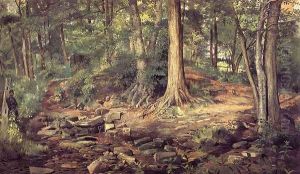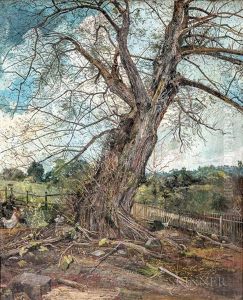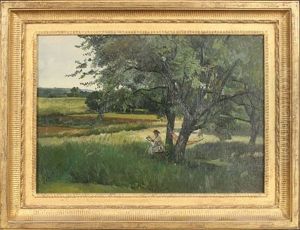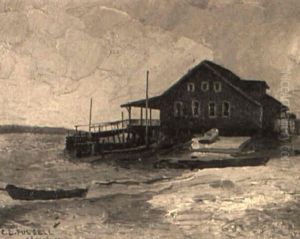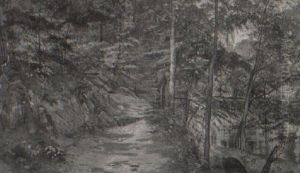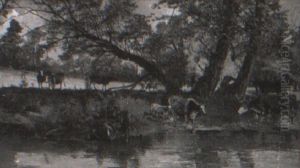Charles Lewis Fussell Paintings
Charles Lewis Fussell was an American painter known for his landscape art, capturing the serene and picturesque scenes of the American countryside. Born on July 17, 1840, in West Vincent Township, Chester County, Pennsylvania, Fussell grew up in an environment that nurtured his love for nature and the outdoors, elements that would later become central themes in his artistic work. He was primarily self-taught, although he did take some art lessons in Philadelphia, which were crucial in shaping his early artistic direction.
Fussell's career as an artist unfolded during a time when the American art scene was undergoing significant transformation, with the Hudson River School's influence starting to wane and new artistic movements beginning to emerge. Despite the changing trends, Fussell remained dedicated to his style, focusing on the natural beauty of the American landscape. His works often depicted the rolling hills, forests, and rivers of Pennsylvania and the northeastern United States, imbued with a sense of realism and attention to detail that captured the changing seasons and times of day.
In the late 19th century, Fussell moved to Media, Pennsylvania, where he became an integral part of the local art community. Although he never gained the same level of fame as some of his contemporaries, his paintings were appreciated for their beauty and craftsmanship, and he was respected among his peers. Fussell also developed friendships with other artists, including Thomas Eakins, who is said to have influenced his work. Despite this, Fussell's approach to landscape painting remained unique, characterized by a delicate use of light and shadow that brought his rural scenes to life.
Charles Lewis Fussell passed away on November 20, 1909, in Media, Pennsylvania. While he may not have achieved widespread fame during his lifetime, his contributions to American landscape painting have been reassessed and appreciated in more recent years. Fussell's works are now recognized for their contribution to the American art scene of the late 19th century, capturing the essence of the country's natural beauty during a period of significant change and development. His paintings are held in various public and private collections, serving as a testament to his skill and dedication to portraying the American landscape.
